Category Gran Turismo Inaugural season 1993 | ||
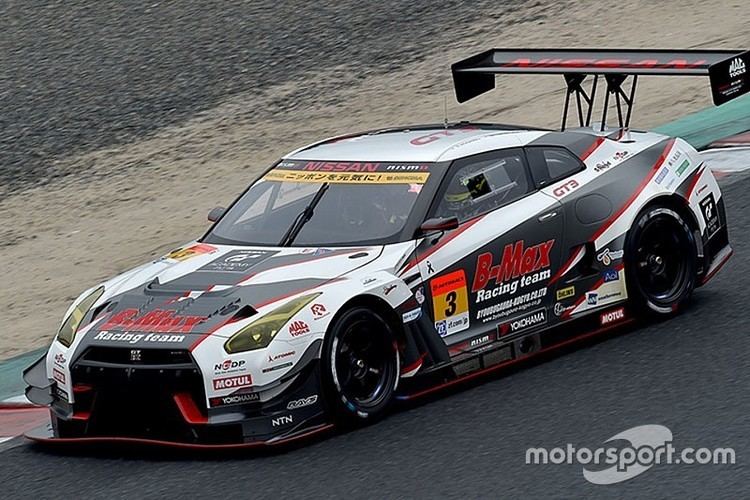 | ||
Teams 15 (GT500)25 (GT300) (total: 40) Teams' champion GT500: Lexus Team SARDGT300: VivaC team Tsuchiya (ja) | ||
Super GT is a grand touring car racing series that began in 1993. Originally titled as the Zen Nihon GT Senshuken (全日本GT選手権), generally referred to as either the JGTC or the All Japan Grand Touring Car Championship, the series was renamed to Super GT in 2005. It is the top level of sports car racing in Japan.
Contents
- The JGTC years 19932004
- Super GT 2005present
- Races
- The cars
- GT500
- GT300
- Parity
- Success ballast
- The drivers
- 1998 JGTC Fuji incident
- Video games
- References
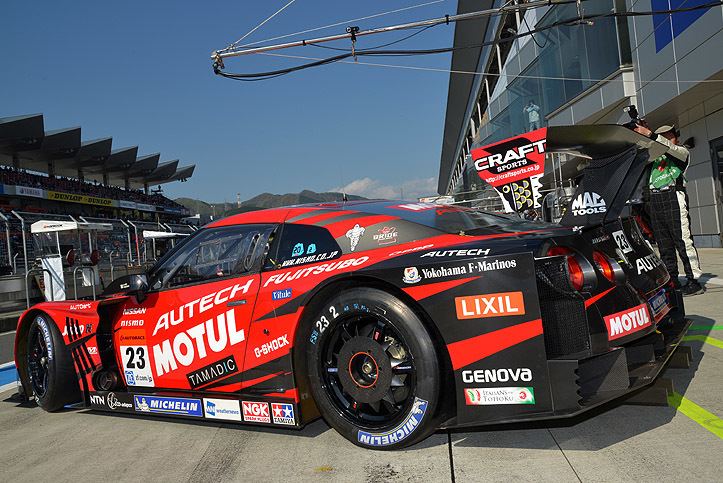
The series is sanctioned by the Japan Automobile Federation (JAF) and sponsored by the GT Association (GTA). Autobacs has served as the title sponsor of the series since 1998.
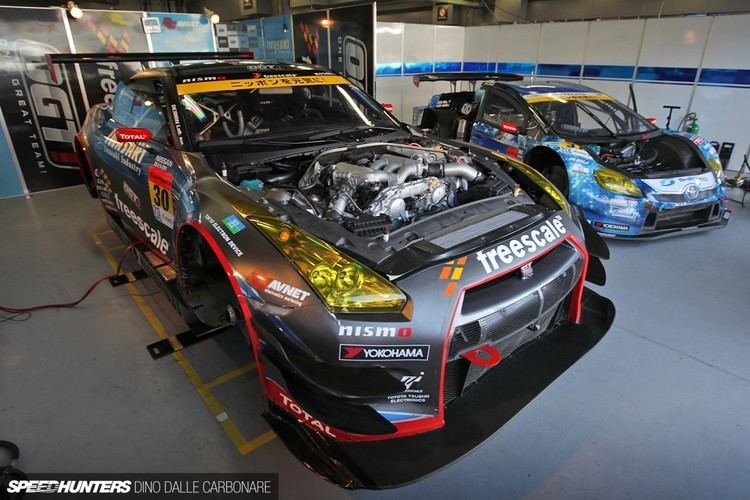
The JGTC years (1993–2004)

The JGTC (Japanese Grand Touring Championship) — established in 1993 by the Japan Automobile Federation (JAF) via its subsidiary company the GT-A (GT Association) — replaced the defunct All Japan Sports Prototype Championship for Group C cars (that was terminated by the end of 1994) and in the same year Japanese Touring Car Championship for Group A touring cars, which would adopt the supertouring formula which was used worldwide. Seeking to prevent the spiralling budgets and one-team/make domination of both series, JGTC imposed strict limits on power, and heavy weight penalties on race winners in an openly stated objective to keep on-track action close with an emphasis on keeping the race goers happy.
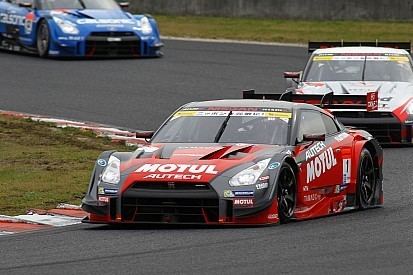
In its first ever race, which was also an IMSA GT exhibition race, apart from the GTS and GTU cars from the United States series, as with the rest of the season, the grid consisted of mostly Japan Super Sport Sedan cars with the only genuine JGTC cars being two Nissan Skyline GT-Rs entered by NISMO, which were in fact modified Group A cars. The prototypes and European GT cars would only appear one race to be joined by the IMSA and Group N cars at the Suzuka 1000 km.
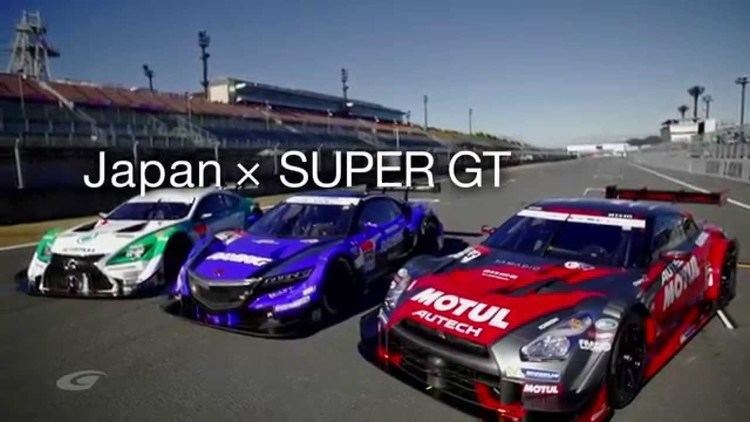
For the following season, the series would undergo a rules overhaul, class 1 for cars similar to that of the FIA's GT1 category and class 2 for cars that were the equivalent to the GT2 category. The JSS series would altogether dissolve into the latter category. What made the series more significant was compared to the series from other countries, JGTC teams had at the time the freedom to enter whichever cars they preferred, even if it was the JSS cars from the inaugural season and IMSA GTS spaceframe racers. The Group C prototypes, whilst easily showing dominant form, were banished at the end of the 1994 season.
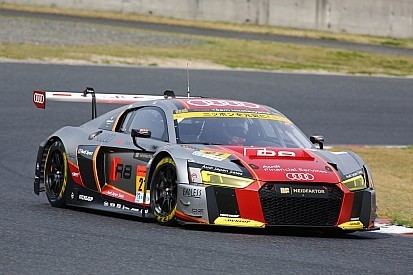
By the end of the season, as the cost of attaining a FIA's GT1 cars increased dramatically, in order to keep costs down and determined not to go the same way as the JSPC series it replaced, the GT-A would go through another rules overhaul. This time was a change adoption of the newly formed GT500 and GT300 regulation which capped cars depending on weight and brake horsepower with an air restrictor. In 2002, the GT-A made another rule change, this time because the series had been intended to be a GT championship; this meant all competing cars must remain as two doors, while a special waiver was given to allow Cusco Racing to race their Subaru Impreza sedan. (In 2012, 4-door cars became explicitly allowed in GT500, although no manufacturers used them.)
Super GT (2005–present)
After years of successive rules changes, at the same time, the JGTC planned holding one more race outside Japan, in China (Shanghai), in addition to Malaysia (Sepang). However, holding the series in more than three countries violates from the definition of the "national championship" of FIA. Therefore, the series needed to be authorized directly by FIA and was not able to be named Japanese Championship because the series had to be parted from Japan Automobile Federation (JAF), the Authority Sport Nationale (ASN) of Japan.
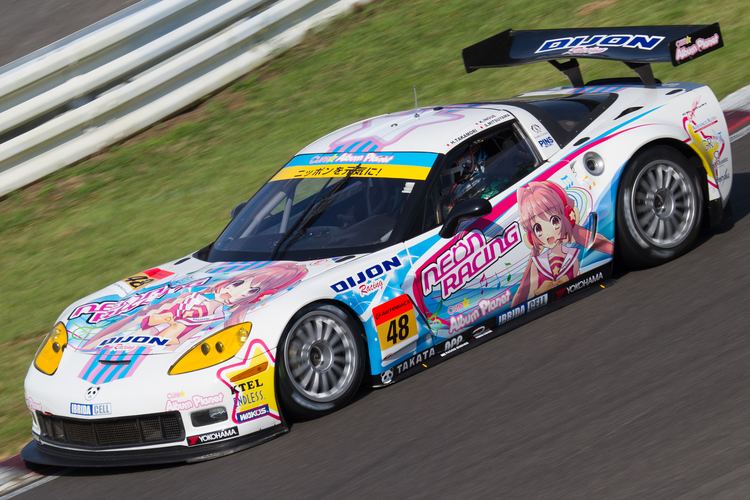
On December 10, 2004, while the series had been mainly focused on Japanese domestic teams, sponsors and fans, with an ever-rising international fan following and TV coverage shown all over the world it was announced that JGTC would now be called Super GT with the goals of "challenge to the world", "challenge from the world", and "challenge to entertainment".
Races
Races are held as part of a yearly series. Races take place on well known Japanese race tracks like Twin Ring Motegi, Fuji Speedway, and Suzuka Circuit. The series was expanded to its first international venue in Malaysia (2000), and an exhibition race in the Los Angeles area (2004) at the Auto Club Speedway Automobile Competition Course (a day-to-night race) and infield courses. The Malaysian leg of the series, held at Sepang International Circuit was made an official race from 2002 and counted in the points. For the 2011 & 2012 Malaysian leg, the official organizer is JP Performance Motorsports Sdn. Bhd. (JPM). The baton was passed on to JPM to carry the Super GT tradition in Malaysia with hopes of producing an even more electrifying event.
Races were planned for both Zhuhai International Circuit in 2004 and Shanghai International Circuit in 2005, but both events failed to materialize.
Races are held as a single long endurance race of 300 km or greater such as 1000km Suzuka event. Through in season 2011, most of the race changes into sprints of 250 km due to the aftermath of 2011 Tōhoku earthquake and tsunami.
On 15 December 2011, a deal has been agreed between GT-A and Woo Myung Holdings to host a Super GT race at the Korea International Circuit in Korea in 2013, although the race fell through.
On 12 August 2013, GT-A signed a contract with Buriram United International Circuit to host a race at Buriram, Thailand in 2014.
The cars
The cars are divided into two groups; GT300 and GT500. The names of the categories derive from their traditional maximum horsepower limit - in the early years of the series, GT500 cars would have no more than 500 horsepower, GT300 cars would max out at around 300 hp. However, the current generation of GT500 powerplants produce in excess of 600 horsepower. Meanwhile, in present-day GT300, the horsepower range varies from around 400 to just over 500 horsepower, however, GT300 cars have far less downforce than their GT500 counterparts.
GT500
The top class in Super GT, GT500, is dominated by the three largest automakers in Japan - Nissan, Honda, and Toyota. Since 2006, Toyota has been represented in GT500 by its luxury vehicle brand, Lexus, after the retirement of the Toyota Supra from the series. The GT500 class is composed entirely of manufacturer-supported teams, the giants of the Japanese racing industry.
Since 2014, GT500 cars are powered by twin-turbocharged, inline four-cylinder engines with two liters of displacement and producing over 600 horsepower. The cars are tube-frame, silhouette racing cars similar to those seen in the Deutsche Tourenwagen Masters (DTM). The advancements in aerodynamics and horsepower, combined with an ongoing tyre war driving even higher speeds, have made the GT500 class the fastest form of production-based sports car racing today.
For many years, the Nissan Skyline GT-R, the Toyota Supra, and the Honda NSX represented their respective brands in GT500. Today, the three cars competing in GT500 are the Nissan GT-R (R35), the Lexus RC-F, and the second-generation Honda NSX. Other models, such as the Nissan Fairlady Z and the Lexus SC 430 have been used, as well as the Honda HSV-010 GT, a prototype car developed specifically for Super GT with no road-going variant.
In the earlier years of the GT500 category, a number of foreign manufacturers entered cars in the series, with varying success. The McLaren F1 GTR is, to date, the only foreign car to win the GT500 championship, when it did so in dominant fashion in 1996. The Porsche 911 GT2 and Ferrari F40 also won races in the early years of GT500. The last foreign-built car to enter the series was the Aston Martin DBR9, which fared poorly in its brief run in 2009 - illustrating the overwhelming advantage in raw pace that the GT500 class cars had over the FIA GT1 category cars that dominated the landscape in Europe.
In 2010 the GT association announced they will start to investigate the possibility to unite their GT500 regulations with the DTM regulations. In October 2012 a cooperation deal was signed in Tokyo. The agreement regarding the use of the "New DTM" regulations by Japan's Super GT begins in 2014 and runs – for the time being – for four years. As part of these regulations, the 4.5 liter, naturally aspirated V8 engines have been replaced by smaller, lighter 2.0 liter 4-cylinder turbo engines, and new aerodynamics have been fitted.
In 2012, Super GT500 cars based on 4-door sedans were allowed, but were never used. The sedans remained in the GT300 class.
GT300
Few works teams participate in GT300, so the field tends to be much more varied in terms of types of cars entered. The big Japanese car makers also participate in this class, as well as more exotic cars from the likes of ASL, Mosler and Vemac (Lotus tuner). Since 2006, European-style GT cars have chosen to concentrate in this series. Starting from the 2010 season, cars built to FIA GT3 specifications started to race alongside JAF-GT and GT2 cars.
Along with the standard GT cars, the Shiden (MC/RT-16), a Mooncraft/Riley Daytona Prototype car reviving the original 1977 Mooncraft Shiden 77 (紫電77) also exists in GT300 class since 2006, getting good results (losing the title to RX-7 with tied points but fewer wins in 2006, eventually taking the title in 2007). Until the early 2000s when FWD cars were being permitted to be converted to RWD configuration, many of these such as Mitsubishi FTO and Toyota Corolla Levin AE101 competed in its original configuration, and did not win any championships. Cars with rear wheel drive tend to dominate the series until 2008, when an All Wheel Drive Subaru Impreza developed by Cusco won in Sepang.
GT300 cars are much more regulated than their GT500 counterparts, and much more closely resemble road-going versions. Chassis clips and realignments are not allowed (except the latter in the case of front-wheel drive cars), which results in a much more affordable racing experience for privateers. Canards are not allowed in GT300, even if they came on the road-going car. While engine outputs and modifications are at a lower level than the GT500 cars, the GT300 cars still post competitive times and races are relatively tight when combined with GT500 traffic.
Parity
Super GT is unique in its open and blunt statement that it is committed to providing exciting racing first, at the expense of runaway investment by works teams. Cars are therefore very heavily tampered with by the governing body. At the start of the season, each car is fitted with an air intake restrictor to limit power to the stated class maxima, thus restricting excessive development to make a more powerful engine. Pitstops and driver changes during the race are done within mandatory windows, to prevent tactics from dominating a race. (In 2004, during the Fontana exhibition race, a few teams were penalised after the race ended when race officials, a mix of officials from both the host country and Japanese ASN's, ACCUS/FIA (which the sanctioning organisation, SCCA, is a member) and the JAF, discovered their pit stop came one lap before the mandatory window had opened.) All regulations and adjustments to the regulations are publicly announced, in contrast to many other better-known racing promotions.
Success ballast
Perhaps the best-known handicap system in use in the Super GT is the 'success ballast' system, called "weight handicap" where weight penalties are assigned depending on a car's performance during the race weekend. While this system is also used in other series like the FIA GT and the BTCC, who pioneered the system, the Super GT's version of the system is notable in that weight penalties are meted out more aggressively. While other series mete out penalties based on final position at the end of the race, Super GT also adds ballast based on qualifying position and individual lap times, and even in specific modifications (with the penalty on fastest lap in final lifted in 2007). In the 2007 season (GT500), the Takata NSX team achieved a record-breaking 5 pole positions in the first 7 races, but as such a system exists, they only won one race among them. Such regulation also keeps teams from the championship before the final race: only two GT500 teams (ARTA in 2007 and MOLA in 2012) have managed to clinch a driver's Championship prior the final race in the series' history.
Following repeated cases of champions without winning a single race, in 2009, the handicap system was changed in the final two races to combat sandbagging, discouraging a team from intentionally finishing poorly in qualifying or the race, as well as intentionally being slower in the race during the run to the end of the season. During the final two races, the ballast will initially be halved in the penultimate race, and then lifted altogether in final race for all teams that participated in every round. Teams missing only one round receive halved-ballast in the final race instead.
The drivers
Like the series, Super GT drivers are very popular in Japan with a huge international fan base. One of these drivers who has gained international appeal is Keiichi Tsuchiya who raced for the Taisan and ARTA teams before transferring to a managerial role upon his retirement in 2004. Other drivers who were famously associated with the series and still have active involvement through team ownership are Masahiro Hasemi, Kazuyoshi Hoshino, Aguri Suzuki, Kunimitsu Takahashi with the latter being a former President of the GT Association, who runs the series. The series also attracts drivers who see the series as a stepping stone to the Formula One championship (almost always parallel with their involvement with Formula Nippon) including Ralf Schumacher or Pedro de la Rosa, and drivers who are no longer in F1 but want to continue their career, most famously Érik Comas, who was the series' most successful driver until he stepped down from his position as a number one driver.
With very few professional GT300 drivers, many of them have a fan base for their car, but very few of them have a fan base as a driver, particularly Nobuteru Taniguchi (formerly driving the Wedsport/Bandoh Racing Project Celica, Direxiv, RE Amemiya, and now with Goodsmile Racing) who is also well known as a D1GP competitor and Manabu Orido (formerly driving the Denso SARD Supra and the Eclipse Advan Supra for the GT500 class, and the WedSport/Bandoh Racing Project IS350 which won the 2009 GT300 championship.) who is a D1GP judge turned competitor and currently driving the RIRE Lamborghini Gallardo. The other well-known driver in the category who is well known within Japan, is the TV presenter and singer Hiromi Kozono, who currently drives a Jim Gainer Ferrari 360 and Masahiko Kondo, also a pop star, actor and racer turned team owner who competes in the GT500 category. The only current foreign driver in the GT300 class is ex-Formula 3000 driver Marco Apicella. Another popular GT300 driver is Tetsuya Yamano, who runs his own driving school in Japan and has been a winner in his class for 3 successive years at the Malaysian round. As of 2007, he is driving for Cusco. Previous GT300 drivers include professional British driver Adam Wilcox who raced in the series from 2001 to 2003.
1998 JGTC Fuji incident
Japanese driver Tetsuya Ota is notable for surviving a fiery multi-car pileup he was involved in during a JGTC race at Fuji Speedway on May 3, 1998. The accident was initially caused by an oversaturated track. Ota then aquaplaned and left the track which put him directly into an already crashed Porsche. At the time of the accident, the Ferrari Ota was driving had a full cell of fuel which was ignited by the impact. Ota was severely injured due to third-degree burns on a good percentage of his body which may have been prevented if JGTC, at the time, had sufficient emergency response. Ota filed a lawsuit against the racing club plus organizers for negligence and won the sum of ¥90 million (US$800,000).
